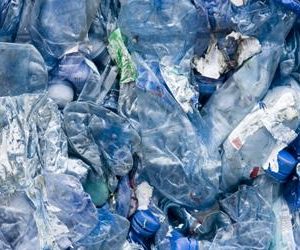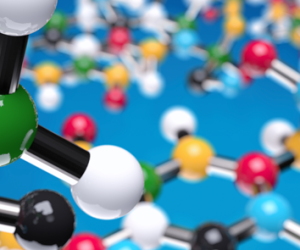Chemical Contaminants
Chemical contaminants are chemicals present in soil, air and water that are harmful to plants and animals. Though some may occur naturally, the majority of chemical contaminants enter the environment through industrial activities, discharge from wasterwater treatment facilities, manufacturing and usage of consumer products and agricultural activities.
Contaminants that are in our environment today can be classed into three categories; legacy contaminants, contaminants that are known to be problematic but are still in use today, and contaminants that are an emerging concern. A number of these pollutants have been observed, or are potentially present, in the Lake Simcoe watershed.

A pesticide is a substance used for preventing, destroying, repelling, or mitigating biological pests. Pesticides have provided incredible advantages in many ways by increasing crop yields and bolstering food availability. Unfortunately, their use can have unintended negative impacts. Contemporary pesticides are those that are currently used or have recently come under restriction in Ontario.

Flame retardants are chemicals that can be applied to an object to make it resistant to catching fire. They are used industrially and can also be found on manufactured items such as couches, electronics and even baby toys. The chemical structures of flame retardants make them persistent (long-lasting) in the environment.

Microplastics are small but potentially harmful plastic pieces that can have negative impacts on rivers, lakes, oceans, fish and other wildlife. Researchers are working to understand the extent of pollution and risks, including predictions of future microplastic abundance for both aquatic (water) and terrestrial (land) ecosystems.

Perfluoroalkyl substances (PFASs) are commonly found in everyday products like non-stick frying pans and sprays used to provide stain resistance. They are also used in fire-fighting foam and in industries such as aerospace. PFASs are very persistent in the environment and in the human body – meaning they don’t break down and they can accumulate over time.

Petroleum hydrobcarbons are commonly known as fossil fuels. They are found in essential everyday life products such as gasoline for cars and jet fuel. They are also used in creating materials like plastic, computers and MRI scanners. Contamination from PHCs is one of the most common types of soil and groundwater pollution in Canada.

We use pharmaceuticals and personal care products every day. These common items include medications (both over the counter and prescription drugs), as well as soaps, detergents, cosmetics, perfumes and deodorants. These products provide us with many health benefits. However, there are growing concerns around their presence in our environment.

Phenols are used in the construction, automotive and appliance industries and are commonly found in household cleaners as disinfectants. Phenols do not tend to persist or accumulate in the environment. They are most dangerous and concerning when found in large quantities (such as from industrial spills).

Polychlorinated naphthalenes were once used for cable insulation and preservation of wood, paper and textile products. PCNs have been phased out of use, but can be produced naturally as a by-product in combustion or emitted during metal refinement. Despite being largely phased out, their persistence in the environment continues.
Lake Simcoe and its Tributaries
In 2015, a study was undertaken to investigate levels of chemical contaminants in the surface water and sediments of Lake Simcoe and its tributaries. The contaminants included in this study were chosen based on historical use within the watershed, previous research undertaken (such as the LSRCA 2004 study), and literature from similar areas in the Great Lakes Region. As such, this study included: petroleum hydrocarbons (or PHCs); polycyclic aromatic hydrocarbons (PAHs); phenols; metals, including chromium and mercury; organochlorine pesticides (OCPs), including DDT and its metabolites; neutral chlorinated compounds (NCCs), and polychlorinated biphenyls (PCBs).
In terms of PHCs, none were detected in surface waters of the lake or tributaries, but sediments had some high values related to Fraction 4G. No PHC guideline values currently exist but one site in Mill Creek (Orillia) had a concentration that was 11 times higher than the average of other tributary sites. In the lake, high PHCs were present in the lower East Holland River and in shallow water off Barrie. PAHs were not often detected in surface waters, but high results were found in sediments at Mill Creek in Orillia, the outlet of the Holland Marsh, and the East Holland River downstream from Aurora and Newmarket. In Lake Simcoe, high PAHs in sediment were found in the shallow and deeper water off Barrie. Although no NCCs were detected at our study sites, phenols exceeded guideline values at Colbar Marsh and the deepwater lake site near Barrie. At the shallow water site off Barrie, PCB concentrations exceeded guideline values.
Of more concern were the presence of OCPs and metals in the Lake Simcoe Watershed. OCPs were mostly found in, and downstream of, areas of intense agricultural use (e.g. Holland Marsh and other polders) where they were used extensively as pesticides in the mid-20th century. Among OCPs, the presence of DDT, and its metabolites DDD and DDE, are of concern in that the highest concentrations recorded in Ontario were found. DDT, DDD, and DDE are very persistent and can have large impacts to foodwebs, especially to top-level predators. Heavy metals (esp. cadmium, copper, arsenic, and zinc) were found in areas with heavy industrial uses (particularly Mill Creek in Orillia), but the presence of chromium is of special concern in the East Holland River, linked to the locations of former leather tanneries in Aurora and Newmarket.
Generally, the contaminants recorded in the Lake Simcoe Watershed are the result of non-point anthropogenic sources (e.g. automobile exhaust, fossil fuel combustion) and specific areas of industrial, urban, and agricultural land-use activities (e.g., pesticides). Although some contaminants may be linked to current uses (e.g. PHCs, PAHs, phenols), others are likely legacy contaminants (i.e. DDT and chromium) from historical activities. Overall, it is recommended that regular monitoring of specific contaminants (e.g. DDT and metabolites, chromium, heavy metals) be undertaken more frequently. Sampling should target areas of guideline exceedances such as urban centres (Aurora, Barrie, and Newmarket) and intensive agricultural areas (Holland Marsh and other polders). More frequent and targeted sampling will aid in better evaluating our understanding of changes in chemical contaminants, including decreases or increases in concentration, movement through the watershed, and the potential risks to aquatic organisms or human health.
![]() Who to Contact
Who to Contact
Integrated Watershed Management
✆ 905-895-1281
✆ 1-800-465-0437 Toll free 
![]() New Report
New Report
Chemical Contaminants in Lake Simcoe and its Tributaries
in 2015, a study was undertaken to investigate levels of chemical contaminants in the surface water and sediments of Lake Simcoe and its tributaries. The contaminants included in this study were chosen based on historical use within the watershed, previous research undertaken (such as the LSRCA 2004 study), and literature from similar areas in the Great Lakes Region.
Read Chemical Contaminants in Lake Simcoe and its Tributaries
